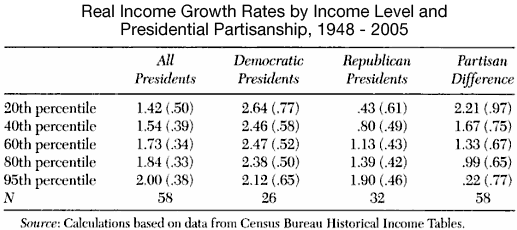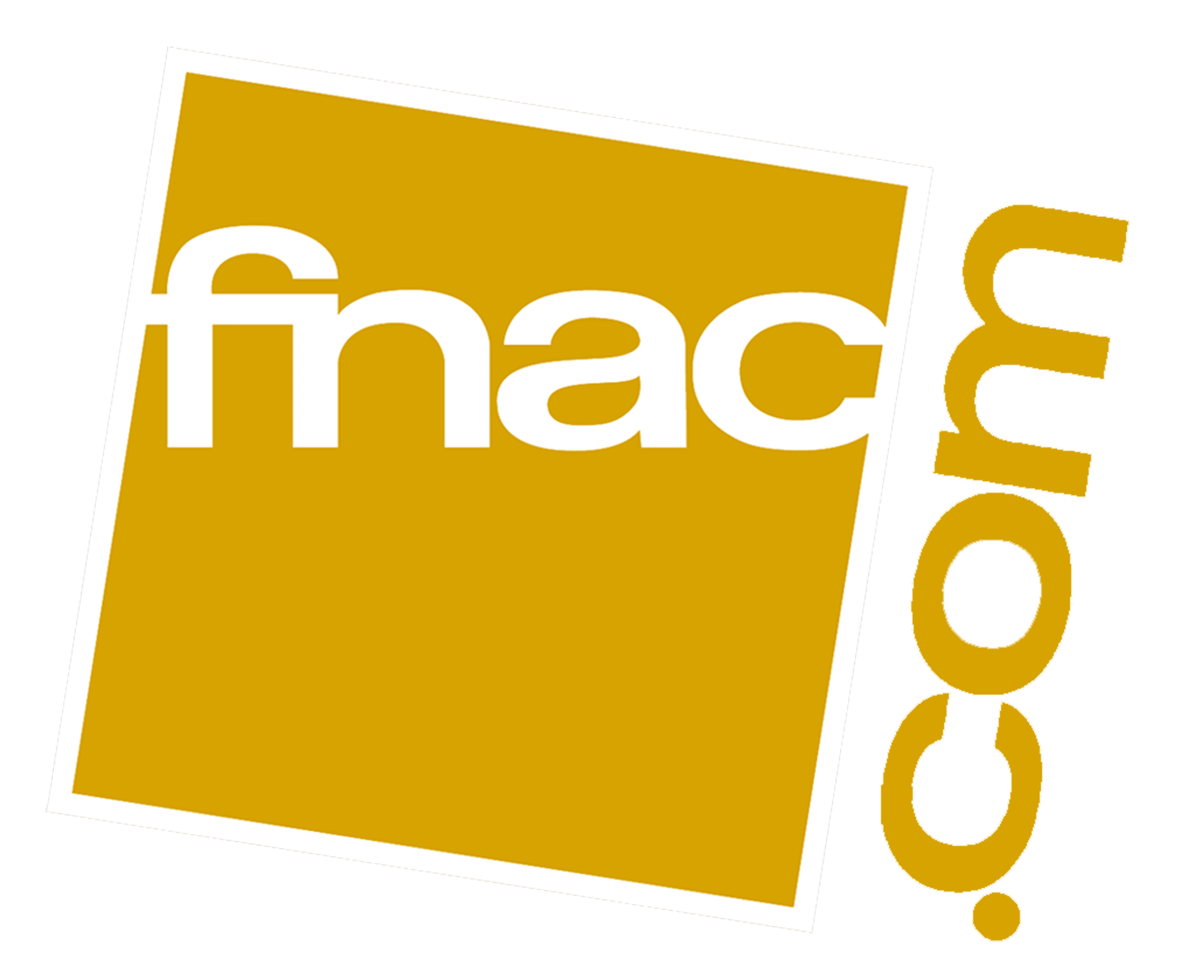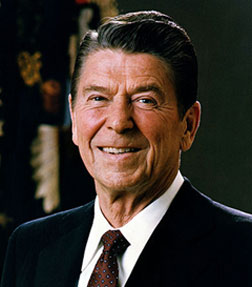Article original :
http://www.slate.com/articles/news_and_politics/the_great_divergence/features/2010/the_united_states_of_inequality/can_we_blame_income_inequality_on_republicans.html
The United States of Inequality
Posted Thursday, Sept. 9, 2010, at 10:14 PM
Ronald Reagan
Liberal politicians and activists have long argued that the federal government caused the Great Divergence. And by « federal government, » they generally mean Republicans, who have controlled the White House for 20 of the past 30 years, after all. A few outliers even argue that for Republicans, creating income inequality was a conscious and deliberate policy goal. Until recently, the consensus among academics—even most liberal ones—was quite different. Economists argued that the Great Divergence was the result not of Washington policymaking but of larger « exogenous » (external) and « secular » (long-term) forces. In June, the Congressional Budget Office calculated that spending by the federal government made up 23 percent of U.S. gross domestic product, after averaging 18.5 percent during the previous four decades. But even with federal spending at this unusually high level (necessitated by a severe recession), Washington’s nut remains less than one-quarter the size of the economy. Most of that nut is automatic « entitlement » spending over which Washington policymakers seldom exert much control. Brad DeLong, a liberal economist at Berkeley,expressed the prevailing view in 2006: « [T]he shifts in income inequality seem to me to be too big to be associated with anything the government does or did. »My Slate colleague Mickey Kaus took this argument one step further in his 1992 book The End of Equality, positing that income inequality was the inevitable outgrowth of ever-more-ruthlessly efficient markets, and that government attempts to reverse it were certain to fail. « [Y]ou cannot decide to keep all the nice parts of capitalism, » he wrote, « and get rid of all the nasty ones. » Instead, Kaus urged liberals to combatsocial inequality by nurturing egalitarian civic institutions (parks, schools, libraries, museums) and by creating some new ones (national health care, national service, a revived WPA) that remove many of life’s most important activities from the « money sphere » altogether.
Finding ways to increase social equality is an important goal, and Kaus’s book remains a smart and provocative read. But the academic consensus that underlay Kaus’s argument (and DeLong’s more modest one) has lately started to crumble.
Economists and political scientists previously resisted blaming the Great Divergence on government mainly because it didn’t show up when you looked at the changing distribution of federal income taxes. Taxation is the most logical government activity to focus on, because it is literally redistribution: taking money from one group of people (through taxes) and handing it over to another group (through government benefits and appropriations).
Another compelling reason to focus on taxation is that income-tax policy has changed very dramatically during the last 30 years. Before Ronald Reagan’s election in 1980, the top income tax bracket stood at or above 70 percent, where it had been since the Great Depression. (In the 1950s and the Mad Men early 1960s, the top bracket exceeded 90 percent!) Throughout the Great Compression, as the economy boomed and income inequality dwindled, the top bracket resided at a level that even most Democrats would today call confiscatory. Reagan dropped the top bracket from 70 percent to 50 percent, and eventually pushed it all the way down to 28 percent. Since then, it has hovered between 30 percent and 40 percent. If President Obama lets George W. Bush’s 2001 tax cut expire for families earning more than $250,000, as he’s expected to do, Tea Partiers will call him a Bolshevik. But at a whisker under 40 percent (up from 35), the top bracket would remain 30 to 50 percentage points below what it was under Presidents Eisenhower, Nixon, and Ford. That’s how much Reagan changed the debate.
But tax brackets, including the top one, tell you only the marginal tax rate, i.e., the rate on the last dollar earned. The percentage of total income that you actually pay in taxes is known as the effective tax rate. That calculation looks at income taxed at various rates as you move from one bracket to the next; it figures in taxes on capital gains and pensions; it figures in « imputed taxes » such as corporate and payroll taxes paid by your employer (on the theory that if your boss didn’t give this money to Uncle Sam he’d give it to you); and it removes from the total any money the federal government paid you in Social Security, welfare, unemployment benefits, or some other benefit. Reagan lowered top marginal tax rates a lot, but he lowered top effective tax rates much less—and certainly not enough to make income-tax policy a major cause of the Great Divergence.
In 1979, the effective tax rate on the top 0.01 percent (i.e., rich people) was 42.9 percent,according to the Congressional Budget Office. By Reagan’s last year in office it was 32.2 percent. From 1989 to 2005 (the last year for which data are available), as income inequality continued to climb, the effective tax rate on the top 0.01 percent largely held steady; in most years it remained in the low 30s, surging to 41 during Clinton’s first term but falling back during his second, where it remained. The change in the effective tax rate on the bottom 20 percent (i.e., poor and lower-middle-class people) was much more dramatic, but not in a direction that would increase income inequality. Under Clinton, it dropped from 8 percent (about where it had stood since 1979) to 6.4 percent. Under George W. Bush, it fell to 4.3 percent.
Measuring tax impacts is not an exact science. There are many ways to define rich, poor, andmiddle class, and many variables to consider. Some experts have looked at the same data and concluded that effective tax rates have gone up slightly for people at high incomes. Others concluded they’ve gone down. The larger point is that you can’t really demonstrate that U.S. tax policy had a large impact on the three-decade income inequality trend one way or the other. The inequality trend for pre-tax income during this period was much more dramatic. That’s why academics concluded that government policy didn’t affect U.S. income distribution very much.
But in recent years a few prominent economists and political scientists have suggested looking at the question somewhat differently. Rather than consider only effective tax rates, they recommend that we look at what MIT economists Frank Levy and Peter Temin call « institutions and norms. » It’s somewhat vague phrase, but in practice what it mostly means is « stuff the government did, or didn’t do, in more ways than we can count. » In his 2007 book, The Conscience of a Liberal, Princeton economist and New York Times columnist Paul Krugman concludes that there is « a strong circumstantial case for believing that institutions and norms … are the big sources of rising inequality in the United States. » Krugman elaborated in his New York Times blog:
[T]he great reduction of inequality that created middle-class America between 1935 and 1945 was driven by political change; I believe that politics has also played an important role in rising inequality since the 1970s. It’s important to know that no other advanced economy has seen a comparable surge in inequality.
Proponents of this theory tend to make their case not by measuring the precise impact of each thing government has done but rather by charting strong correlations between economic trends and political ones. In his 2008 book Unequal Democracy, Larry Bartels, a Princeton political scientist, writes:
[T]he narrowly economic focus of most previous studies of inequality has caused them to miss what may be the most important single influence on the changing U.S. income distribution over the past half-century—the contrasting policy choices of Democratic and Republican presidents. Under Republican administrations, real income growth for the lower- and middle-classes has consistently lagged well behind the income growth rate for the rich—and well behind the income growth rate for the lower and middle classes themselves under Democratic administrations.
Bartels came to this conclusion by looking at average annual pre-tax income growth (corrected for inflation) for the years 1948 to 2005, a period encompassing much of the egalitarian Great Compression and all of the inegalitarian Great Divergence (up until the time he did his research). Bartels broke down the data according to income percentile and whether the president was a Democrat or a Republican. Figuring the effects of White House policies were best measured on a one-year lag, Bartels eliminated each president’s first year in office and substituted the year following departure. Here is what he found:

Overall, pre-tax income increased 1.42 percent annually for the 20th percentile (poor and lower-middle-class people) and 2 percent annually for the 95th percentile (upper-middle-class and rich people). The White House during this period was occupied by five Democrats (Truman, Kennedy, Johnson, Carter, Clinton) and six Republicans (Eisenhower, Nixon, Ford, Reagan, Bush I, Bush II). Bartels plotted out what the inequality trend would have been had only Democrats been president. He also plotted out what the trend would be had only Republicans been president.
In Democrat-world, pre-tax income increased 2.64 percent annually for the poor and lower-middle-class and 2.12 percent annually for the upper-middle-class and rich. There was no Great Divergence. Instead, the Great Compression—the egalitarian income trend that prevailed through the 1940s, 1950s, and 1960s—continued to the present, albeit with incomes converging less rapidly than before. In Republican-world, meanwhile, pre-tax income increased 0.43 percent annually for the poor and lower-middle-class and 1.90 percent for the upper-middle-class and rich. Not only did the Great Divergence occur; it was more greatly divergent. Also of note: In Democrat-world pre-tax income increased faster than in the real world not just for the 20th percentile but also for the 40th, 60th, and 80th. We were all richer and more equal! But in Republican-world, pre-tax income increased slower than in the real world not just for the 20th percentile but also for the 40th, 60th, and 80th. We were all poorer and less equal! Democrats also produced marginally faster income growth than Republicans at the 95thpercentile, but the difference wasn’t statistically significant. (More on that in a future installment.)
What did Democrats do right? What did Republicans do wrong? Bartels doesn’t know; inUnequal Democracy he writes that it would take « a small army of economists » to find out. But since these are pre-tax numbers, the difference would appear to be in macroeconomic policies. (One clue, Bartels suggests, is that Republicans always worry more than Democrats about inflation.) Bartels’ evidence is circumstantial rather than direct. But so is the evidence that smoking is a leading cause of lung cancer. We don’t know exactly how tobacco causes the cells inside your lungs to turn cancerous, but the correlation is strong enough to convince virtually every public health official in the world.
Jacob Hacker and Paul Pierson, political scientists at Yale and Berkeley, respectively, take a slightly different tack. Like Bartels and Krugman, they believe that government action (and inaction) at the federal level played a leading role in creating the Great Divergence. But the culprit, they say, is not so much partisan politics (i.e., Republicans) as institutional changes in the way Washington does business (i.e., lobbyists). « Of the billions of dollars now spent every year on politics, » Hacker and Pierson point out in their new book, Winner-Take-All Politics, « only a fairly small fraction is directly connected to electoral contests. The bulk of it goes to lobbying…. » Corporations now spend more than $3 billion annually on lobbying, according to official records cited by Hacker and Pierson (which, they note, understate true expenditures). That’s nearly twice what corporations spent a decade ago.
According to Hacker and Pierson, industry began to mobilize in the early 1970s in response to liberalism’s political ascendancy (which didn’t end when Richard Nixon entered the White House in 1969):
The number of corporations with public affairs offices in Washington grew from 100 in 1968 to over 500 in 1978. In 1971, only 175 firms had registered lobbyists in Washington, but by 1982, 2,500 did. The number of corporate [political action committees] increased from under 300 in 1976 to over 1,200 by the middle of 1980. […] The Chamber [of Commerce] doubled in membership between 1974 and 1980. Its budget tripled. The National Federation of Independent Business (NFIB) doubled its membership between 1970 and 1979.
The resultant power shift, they argue, affects Democrats and Republicans alike.
Academics who believe that government policies are largely responsible for the Great Divergence don’t breeze past the relevant mechanisms. Bartels writes at length about repeal of the estate tax, and the decline of the minimum wage; Hacker and Pierson about financial deregulation. But their approach to them is more impressionistic than comprehensive. They offer examples and make arguments that are a little more speculative. We’ll look at one such example in the next installment.



